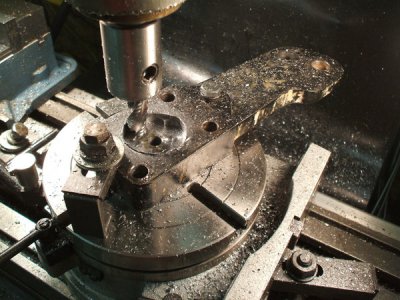Hi
A few month sago I jumped into the cold water and bought a 6" rotary table.
I do love the functionality, I understand the dividing plates, but I have a real hard time to
fixate most working pieces to the table. There is not much room on a 6" table to set the step wedges for
the clamps especially if you need more than one...
I have a hard time to find the center of rotation of the work piece again once it was taken out of the
machine....
I know you can buy a chuck like for a lathe, but then you are loosing material and height again to clamp it.
Somehow this is all very unsatisfying and I cannot find any got literature except for dividing plate divisions on best practices on how to use a rotary table
correctly,
Thank you very much for any hints.
A few month sago I jumped into the cold water and bought a 6" rotary table.
I do love the functionality, I understand the dividing plates, but I have a real hard time to
fixate most working pieces to the table. There is not much room on a 6" table to set the step wedges for
the clamps especially if you need more than one...
I have a hard time to find the center of rotation of the work piece again once it was taken out of the
machine....
I know you can buy a chuck like for a lathe, but then you are loosing material and height again to clamp it.
Somehow this is all very unsatisfying and I cannot find any got literature except for dividing plate divisions on best practices on how to use a rotary table
correctly,
Thank you very much for any hints.

